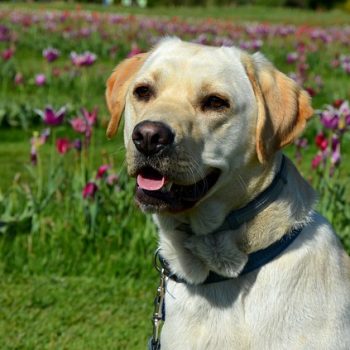Restricting protein for dogs in kidney failure was the gold standard many years ago, but most people know better these days. Protein isn’t the issue so much as the need to restrict phosphorus being most important – at least when the disease isn’t in later stages. It’s different when the issue is protein losing nephropathy (PLN), though. In this disease, protein in the urine (proteinuria) is usually the first thing that’s found, and it can happen almost by accident. You take the dog in for a yearly urinalysis and bingo! – uh-oh. Before you panic because your dog shows trace protein in urine, PLN shows more than that (in urine and blood tests), and in more advanced stages you’ll notice the dog drinking more, urinating more often, and usually lacking some appetite. Let your vet be the diagnostician.
Unlike diets for “plain” renal failure, diets for PLN should restrict protein from the start. How much to restrict by depends on the stage of the disease and the current diet. Restricting dietary protein can result in far less proteinuria. The reason I’m writing about PLN is because I work with many owners of dogs that have this disease, and I’ve found that treats play a bigger role in adding protein to the diet than some people may consider. For example, I had one case that seemed to defy everything I tried until the owner told me that he was feeding the dog a rawhide-like/sort-of-bully-stick treat daily. The label claimed there were 29.4 grams of protein in the treat which is roughly 75% of the total protein I’d wanted this dog to have for the entire day. We saw dramatic improvement once this treat was replaced with fruits and a couple of baby carrots daily. In another instance where food was being used to hide medication so it could be fed as a treat, the cheese and liverwurst added about 14 grams of protein, or roughly 1/3 more than the diet should have contained. Typically, protein restriction for PLN should show results in about one month and dietary protein is reduced again if needed.
Sometimes dogs with PLN turn off their food. They can be nauseous and have a general feeling of being unwell. To help them get through the tougher days until proteinuria is less and they feel better, you can try to change things up and make meal times more exciting. Some things work for some dogs and some work for others. Give these a try.
1. Feed food warmer than usual, or colder than usual. Some dogs even prefer frozen food (go figure!)
2. Add tiny amounts of applesauce, fruit, bread, crackers (without added salt or flavorings), glutinous white rice…basically, anything that adds as little protein as possible. Some dogs go wild for honey, by the way, and you don’t need to add much.
3. Change the area the dog eats in. Was it to the left of the fridge? Try the right. Was it in the back hall? Try the kitchen.
4. Change the feeding dish. Was it a stainless steel bowl? Try a glass bowl. Try a flat plate. Try putting a mat under the feeding dish or removing an existing mat.
5. Make feeding time a peaceful, loving event. Be gently encouragingly when your dog eats. Hand-feed if you have to. Sometimes a few bites out of your hand turns into the dog eating well on his own afterward.

